Conversational AI for Customer Support: Playbook & KPIs

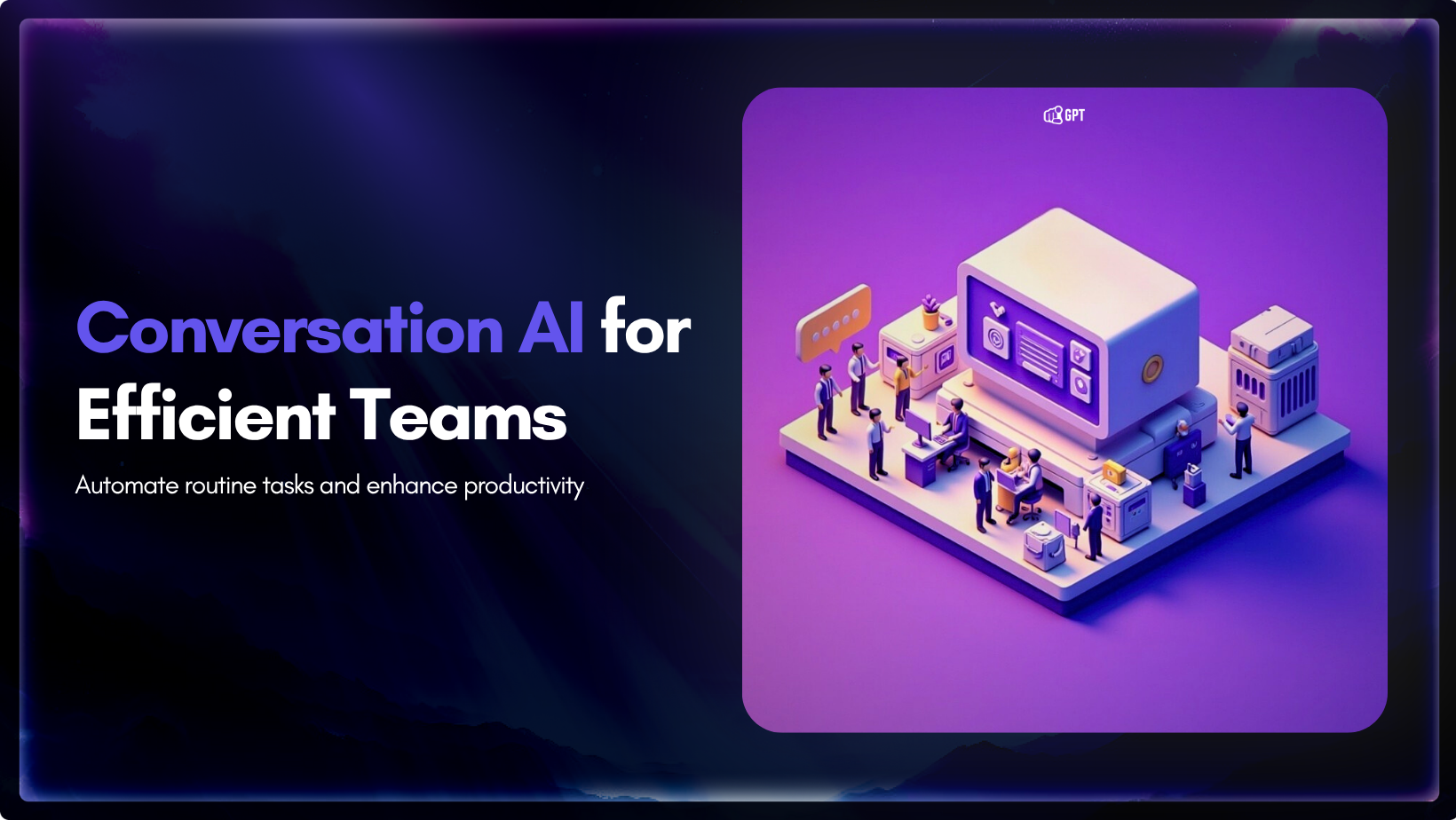
Customer support often means dealing with a steady flow of routine questions that tie up your team and slow everything down.
If you manage support operations, you’ve probably had to deal with more tickets, team members
doing the same things again and again, and the need to save expenses. By automating regular experiences, conversational AI helps organisations grow quickly while also boosting agent productivity and morale.
This is one reason why the global market for conversational AI is growing at over 23% annually through 2030. Businesses are adopting it to handle routine interactions, reduce first-response times by up to 73%, and improve customer satisfaction without increasing headcount.
YourGPT helps support leaders adopt this technology with clarity and control. In this article, you’ll find a clear overview of what conversational AI means in 2025, its key benefits for customer support, and a practical playbook for implementation—including KPIs to measure impact.
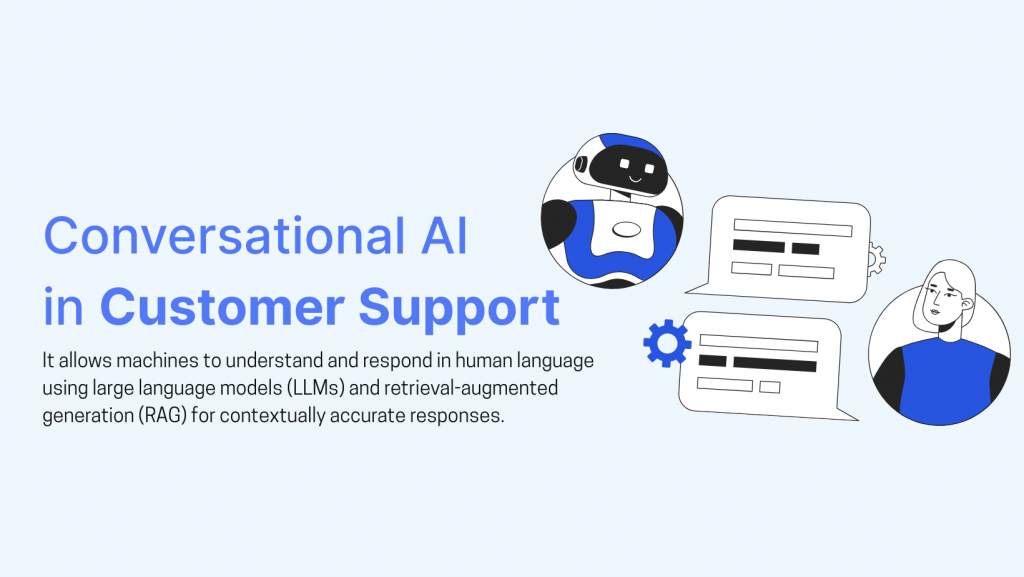
Conversational AI allows machines to understand, respond to, and engage in human language interactions through text or speech. It goes beyond traditional AI chatbots by using large language models (LLMs) and retrieval-augmented generation (RAG) to deliver responses that are more context-aware, accurate, and adaptive.
Modern conversational AI systems respond to the context of each conversation. They can understand human intent, retrieve information from internal knowledge sources, and respond naturally, even in complex, multi-turn interactions.
In customer service, conversational AI powers AI agents that handle common questions, give quick answers, and do things like
These agents work across websites, mobile apps, messaging platforms (such as WhatsApp, Messenger, and Telegram), and voice channels (including phone voice agents).
AI agents assist support teams in reducing response times and operational expenses while also providing consistent, 24-hour assistance without the use of pre-written scripts. They accomplish this by learning from previous interactions and integrating with existing systems.
As AI gets better, conversational systems are becoming more self-sufficient, dependable, and important to customer support strategy.

Book a demo with our experts to learn more about YourGPT and how it can help your business.
Conversational AI offers measurable advantages for support operations by improving responsiveness, reducing workload, and raising service quality. Here are the 8 benefits:
AI agents respond immediately, at any hour, without breaks or queues.
This eliminates wait times and supports customers globally, meeting today’s expectation for 24/7 service.
AI systems understand natural language and deliver consistent, contextual responses. According to industry research, 69% of consumers prefer chat-based support for quick communication, especially when the answers are relevant and immediate.
By automating repetitive tasks such as order updates, FAQs, and account lookups, AI reduces the workload on human agents. This leads to significant cost savings without compromising service reliability.
During peak periods such as product launches, seasonal campaigns, or outages, AI handles high volumes effortlessly. It ensures consistent support at scale, regardless of the number of simultaneous users.
When routine queries are handled by AI, support agents can focus on complex or emotionally sensitive issues. This shift improves job satisfaction, with surveys showing that 79% of support professionals believe AI makes their jobs better.
Conversational AI resolves issues faster by quickly understanding user intent and instantly finding accurate answers from internal resources.
It also minimises extra interactions by anticipating follow-up questions, giving users complete information in fewer steps.
AI systems don’t have to wait for customers to ask for help. Instead, they can proactively reach out based on user actions.
For example, if someone abandons their cart during checkout, the AI can detect this and immediately offer helpful support. This proactive approach improves user experience and boosts customer retention.
After completing all checks, launch your AI chatbot to a small group first.
Monitor key metrics closely, such as issue resolution speed and user satisfaction. Clearly define situations when human assistance is required, and adjust quickly if performance declines.
Maintain strict standards for reliability and data protection. Provide easy ways for users to leave ratings or report issues. Use their feedback to continually improve the AI’s responses.
Regular assessments will help your chatbot remain effective and adaptable over time.
Conversational AI can transform customer service by handling routine tasks efficiently and freeing up teams for more complex work. This playbook walks you through the process of building and launching effective AI chatbots. Whether you’re starting small or scaling up, these steps will help you create solutions that delight users and drive results. Let’s dive in.
The first step in implementation is to connect it with your business goals. Look at common challenges, such as slow response times, high staff turnover, or repeated customer questions. Use a simple spreadsheet to sort support requests by how often they occur and how complex they are. Tasks that happen frequently but require little expertise, like checking order status or resetting passwords, work best for automation.
From there, decide what you want to achieve. Is it lower costs, happier customers, or easier growth? Bring together people from support, IT, and compliance to set clear measures of success. This shared understanding creates a strong base for everything that follows.
With your goals defined, it’s time to pick the tools that match them. Think about what you need: text-based chatbots, voice options, or both. Consider support for multiple languages, easy connections to your systems, and fair pricing. YourGPT gives you the complete AI tool for business support needs.
Weigh ready-to-use options for fast testing against flexible platforms that link with your customer records and information databases. Check for strong data security, alignment with privacy rules, and the ability to grow as your needs change. The right choice here keeps your project on track and adaptable.
Now that the technology is selected, turn your attention to how the AI will interact with people. Review past support records to outline common conversation paths. For each type of question, plan the AI’s responses and decide when to pass the interaction to a human.
Keep things straightforward with clear language and helpful guides. Test the system with different speaking styles and situations to make sure it handles a wide range of inputs. Add simple ways for users to switch to a person, like saying “talk to an agent.” This focus on real user needs makes interactions feel natural and supportive.
Strong conversations rely on good information, so next, build a plan for gathering and using data. Draw from anonymised records of past interactions, frequently asked questions, and helpful articles to train your AI. Include a variety of expressions and languages to reflect diverse users.
Track how you prepare and check the data, and follow privacy guidelines by getting permission and removing personal details. Create a system to learn from user feedback and staff notes, improving how the AI understands requests. Collect only what’s truly needed for better support. This careful approach leads to more accurate and reliable results.
With data ready, build a basic version of your AI chatbot that tackles one common task. Try it out with actual customer questions to see how well it understands and solves them. Get input from your support team and everyday users on aspects like friendliness and usefulness.
Compare different versions through side-by-side tests to fine-tune the responses. Take your time to get it right before adding more features. Starting small like this uncovers problems early and builds confidence for the next stages.
Once testing shows promise, prepare your team for the change. Explain how the AI will support their work and make it easier, rather than take it over. Offer hands-on training on overseeing the system, managing handovers, and keeping information up to date.
For those managing service delivery, knowledge of ITIL training can help align AI integration with established IT service management practices.
Create helpful guides and answers to common questions for your staff. Begin with a small group to test the rollout, then expand step by step. Tie the AI into your current ways of working to keep service levels high. Set up a team to regularly check performance, ethics, and feedback. Smooth preparation like this helps everyone adapt with ease.
Finally, after all checks are complete, introduce the AI to a limited group of users. Keep a close eye on important measures, like how quickly issues get resolved and how satisfied people are. Define clear points where the system should involve a human, and make changes if things slip.
Stick to standards for reliability and data protection. Add simple ways for users to give ratings or point out problems, and use that input to refine the AI and its responses. Regular reviews ensure long-term success and allow you to grow confidently.
By following this AI chatbot guide, you’ll create a system that’s efficient, user-friendly, and ready to evolve. If you’re exploring voice AI applications or need tips on keyword research for your content, I’d love to hear more—let’s build on this together.
The following metrics help you measure performance and drive improvements:
| KPI | Description |
|---|---|
| Engagement rate | Percentage of users who interact with the bot; reflects adoption and relevance. |
| Containment/deflection rate | Share of conversations fully resolved by AI without agent escalation; indicates cost savings. |
| Goal completion rate | Percentage of sessions where users achieve their objectives (e.g., reset password). |
| Average resolution time | Average time the bot takes to resolve an issue; shorter times mean higher efficiency. |
| Average handle time (AHT) | Combined time spent by bot and human agent on a ticket; measure for hybrid workflows. |
| First response time | Time until the bot answers the initial query; impacts user satisfaction. |
| Fallback rate | Rate at which the bot fails to understand and triggers default responses; high fallback suggests poor training. |
| Customer satisfaction score (CSAT) | Survey‑based score collected after interaction; measures perceived quality. |
| Net promoter score (NPS) | Measures willingness to recommend your brand; helps gauge overall satisfaction. |
| Conversation duration | Length of sessions; long durations may indicate complex queries or inefficient flows. |
| Escalation rate | Percentage of sessions escalated to human agents; track to ensure AI is not over‑or under‑escalating. |
| Chat volume and concurrency | Number of concurrent sessions handled; indicates scalability. |
| Agent utilisation | Utilisation percentage of human agents after AI adoption; should decrease for routine tasks. |
| Lead or sale conversions | For commerce use cases, the number of leads generated or transactions completed via the bot. |
To ensure your conversational AI implementation genuinely benefits your support team and customers, follow these best practices:
Launching conversational AI broadly across many scenarios at once can lead to unclear expectations and poor results. Start with one or two clearly defined use cases, such as automating common FAQs or order tracking, to promptly demonstrate value and streamline user interactions. Expand incrementally based on what proves effective.
AI systems cannot solve every customer issue. Provide clear, easy-to-find options for users to connect directly with human agents if the AI assistant cannot fully resolve their query. Set specific triggers, like unable to answer or user frustration, to route users quickly to human support, avoiding negative experiences.
Conversational AI should serve all customers equally. Test and train your AI agents thoroughly on diverse languages, dialects, and accents to avoid biased or misunderstood responses. Ensure your design meets accessibility standards, providing support via voice, text, and screen readers to ensure all users, including those with disabilities, feel comfortable interacting.
Clearly inform users when they are engaging with an AI agent instead of a human representative. Concisely explain how user input contributes to enhancing the system. Transparency builds trust, fostering open communication and encouraging users to share accurate information, ultimately enhancing their reliance on your support.
Your AI agents rely on accurate, up-to-date content to provide useful responses. Outdated information frustrates users and reduces their trust in your AI’s capabilities.
Conversational AI is never fully “done.” Consistently evaluate its performance by tracking metrics like customer satisfaction scores, accuracy of initial responses, and rates of escalation to assess its effectiveness. Use these insights to iteratively improve your AI agents, treating them as dynamic assets that evolve based on real-world feedback and data.
By following these clear guidelines, you will create a conversational AI system that consistently supports your team, delights your customers, and continuously improves over time.
Conversational AI helps customer support teams respond quickly and personally while keeping costs low and employees satisfied. Following a clear, step-by-step approach lets you choose the right tools, design helpful interactions, and make sure everything works smoothly for your customers.
Regularly measuring how well your system performs will show you exactly what works and what needs improvement. It’s also important to keep customer data safe and always make clear when customers are interacting with AI.
By consistently improving how your team uses conversational AI, you’ll create better experiences for your customers and build a stronger, more efficient support team.
Save time, cut costs, and deliver instant replies—trusted by 10,000+ businesses already using AI support agents.
No credit card needed • 7-day free access
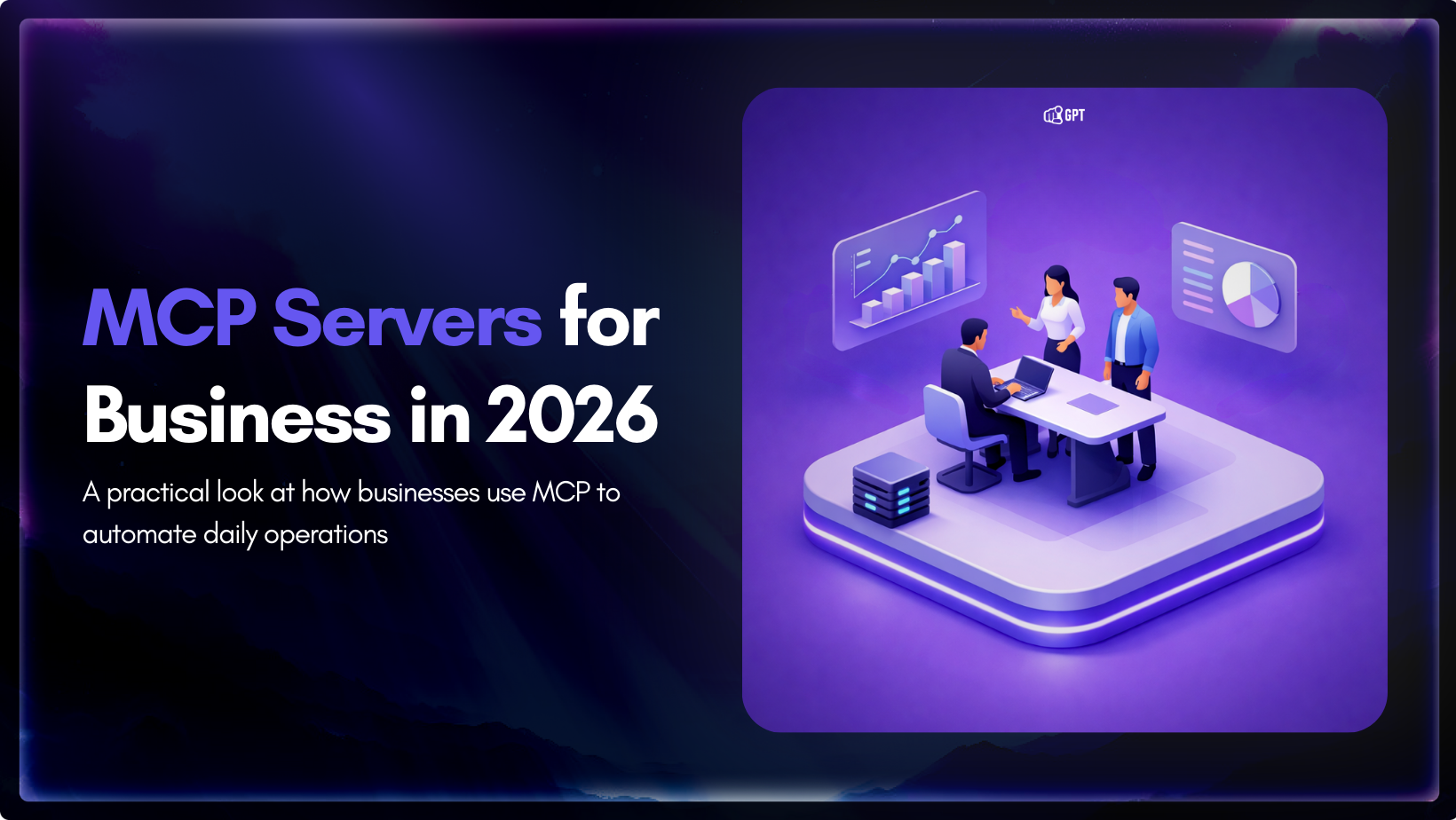
Growth-focused teams move faster when their tools work together instead of competing for attention. Modern development depends on multiple systems to ship code, review changes, monitor services, and access data. Each system serves a purpose, but routine work often means moving between dashboards, scripts, and internal tools. These small transitions shape how consistently a team […]

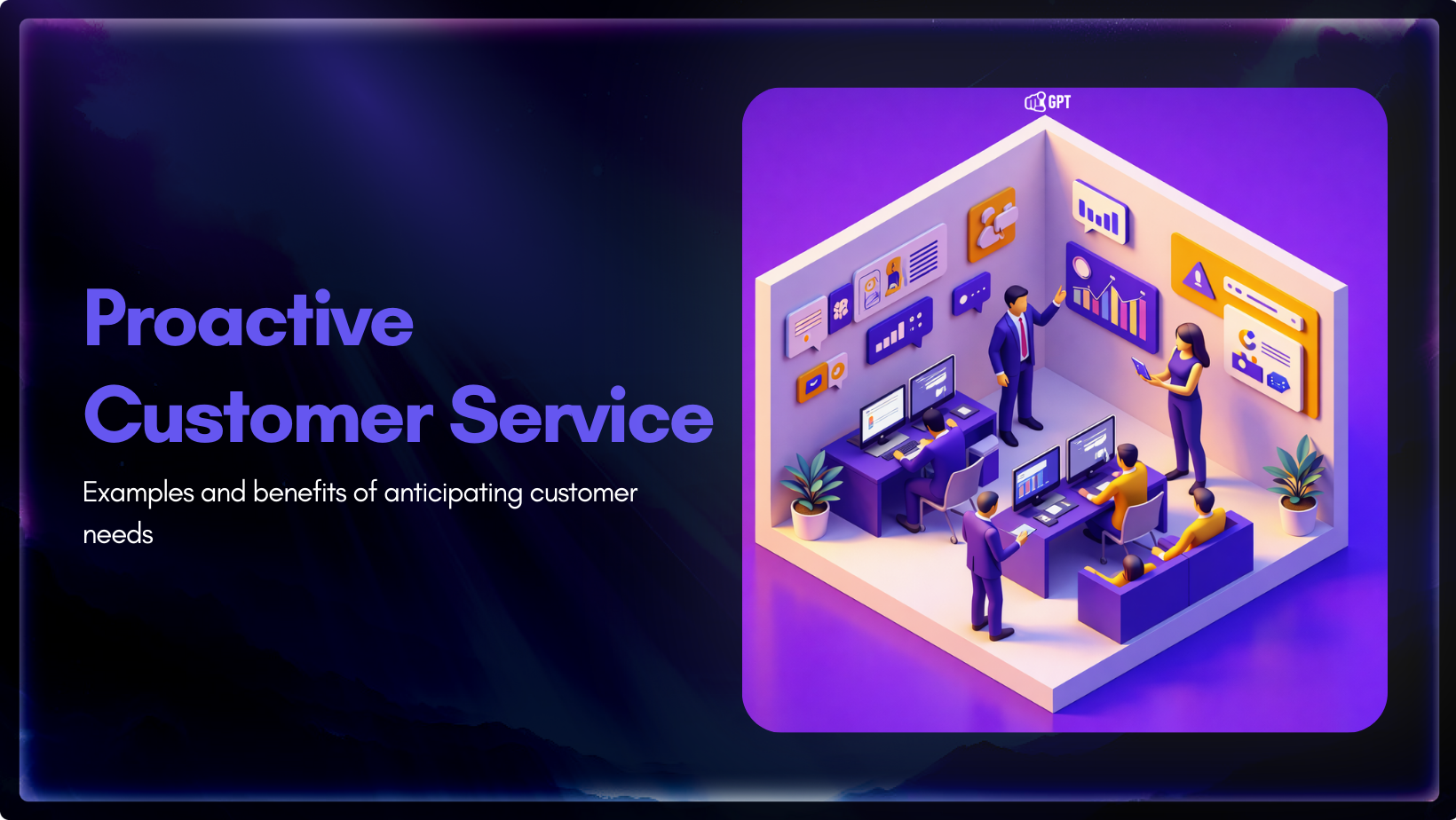
Most customer service moments begin long before a ticket is created. Something feels off. A payment does not go through. A delivery update stops moving. A user gets stuck at the same step and tries again. Customers usually pause, check, retry, and wait before they decide to ask for help. Proactive customer service works inside […]


AI has become a core part of how modern SaaS products are built and delivered. In 2026, customers expect intelligent assistance to be available throughout their journey, from onboarding and everyday product usage to support and account management. Inside SaaS teams, AI is increasingly used to speed up workflows, reduce repetitive tasks, and improve how […]


Shopify stores often use a chatbot on their website to handle product questions, order updates, and support. But customers also message on WhatsApp expecting the same quick answers. Most of them already use WhatsApp throughout the day, so reaching out there feels natural. A chatbot that works across both channels responds in seconds, guides purchase […]


Most businesses do not struggle to generate leads. They struggle to know which ones are worth acting on. Forms get filled, DMs arrive, emails are opened, and chats happen across multiple tools. Some prospects convert. Most do not. The real problem is that there is no reliable way to tell, early enough, which signals actually […]

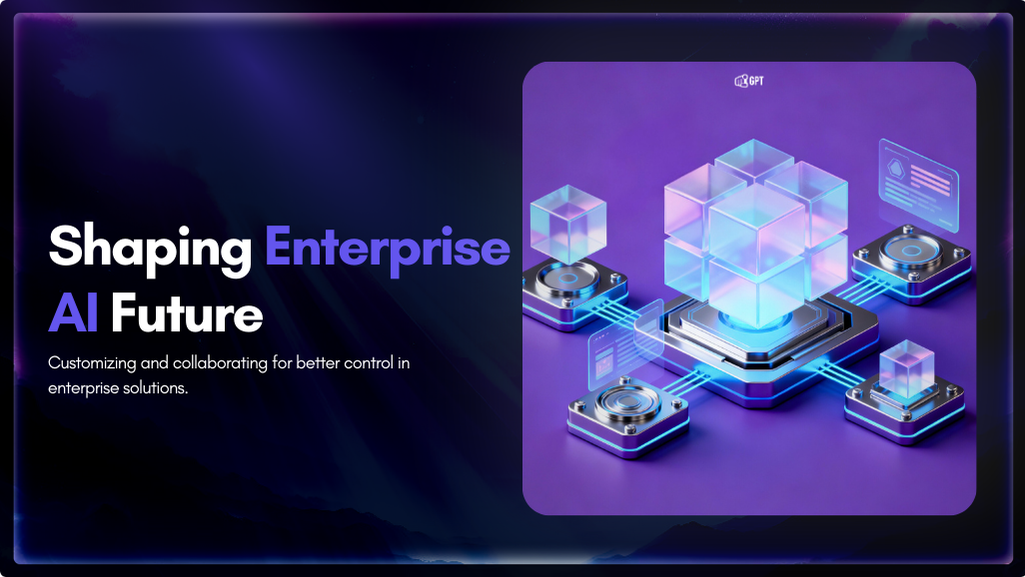
Artificial Intelligence has advanced quickly over the past five years, moving from an experiment to a standard component of modern business. AI has become a central part of enterprise strategy. 88% of organizations are now using AI. This figure has increased from 78% the year before. This transformation is reshaping how companies run, communicate, and […]
